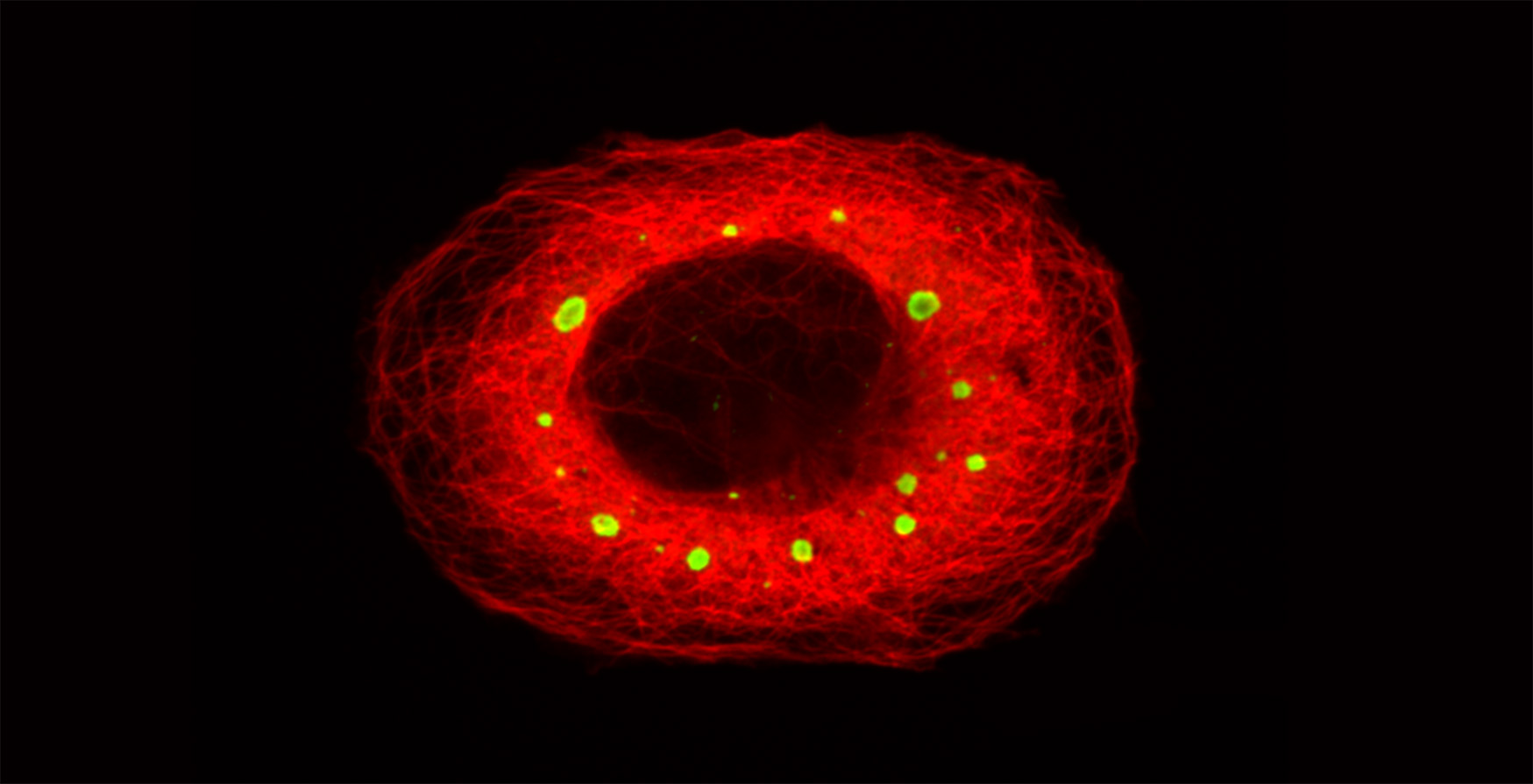Paper published
A new paper from Tom and co-authors, recently published in Nature Physics, uncovers how membraneless organelles interact with the cytoskeleton.
In the paper Tom and co-authors focused on stress granules, which are protein-mRNA droplets the human cell forms in response to harmful environmental conditions. Stress granules are an example of membraneless organelles, liquid-like domains that typically form through phase separation and carry out various functions in the cell.
Dysfunction of such protein condensation, on the other hand, is believed to be a main cause for neurodegenerative diseases such as ALS and Alzheimer's disease. Understanding how such protein droplets move through the cell and why they settle down in certain regions is therefore of great interest from the underlying physical mechanisms to applications in medicine.
The authors found that membraneless organelles show non-specific adhesive interactions with microtubules in the human cell. These wetting interactions between protein droplet and filament network lead to reorganization of the network and migration of the droplets.

Thomas Böddeker et al, Non-specific adhesive forces between filaments and membraneless organelles, external pageNat. Phys. (2022).call_made
